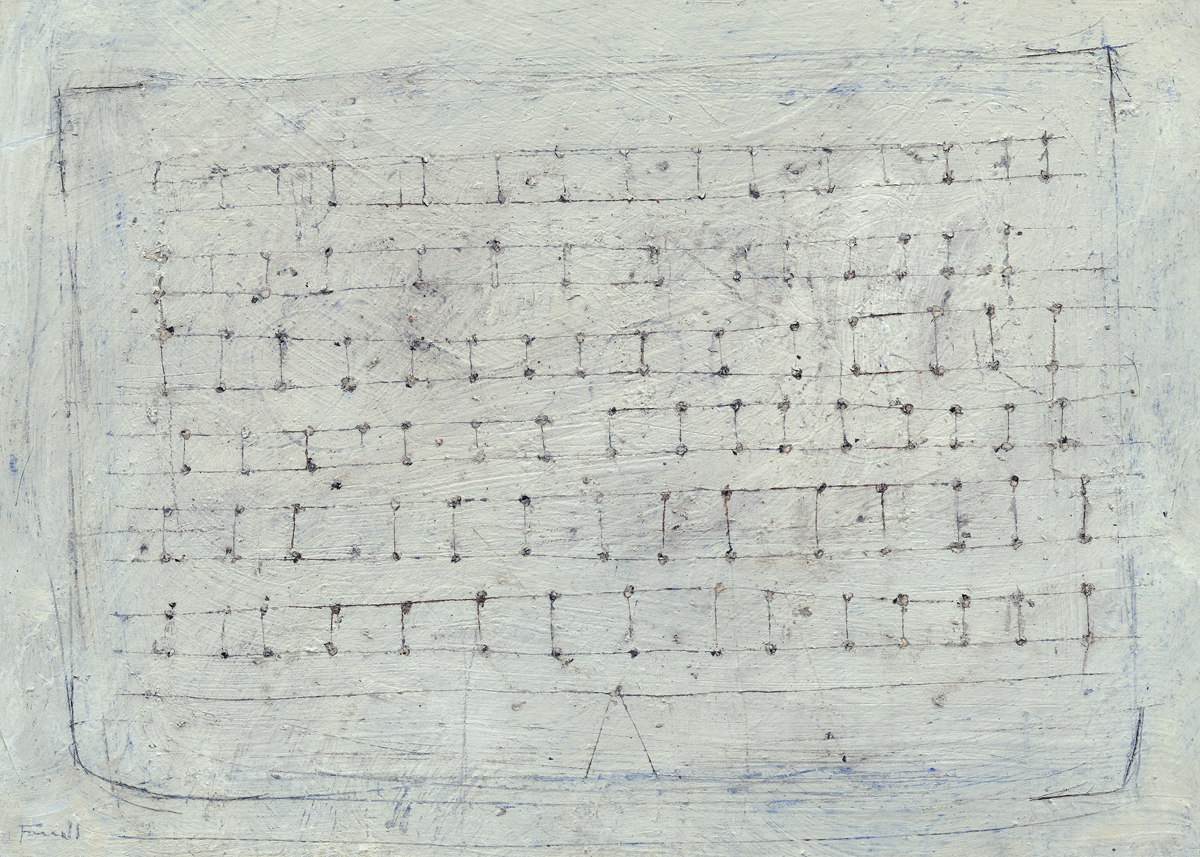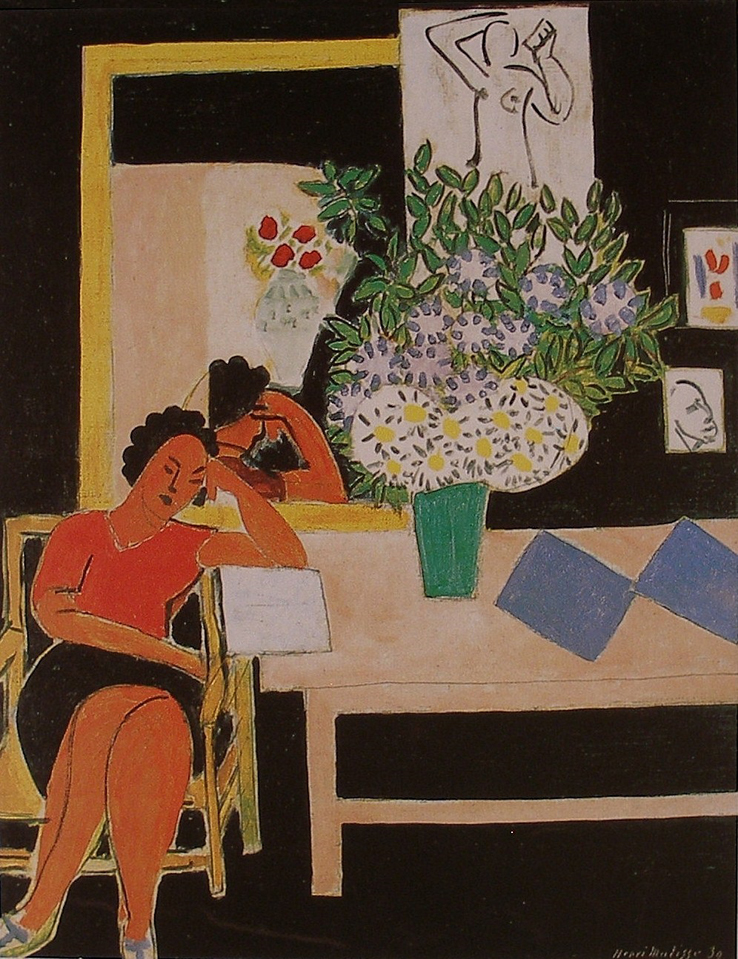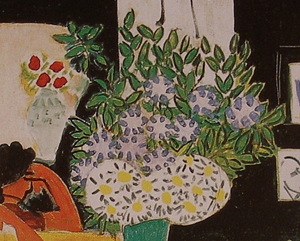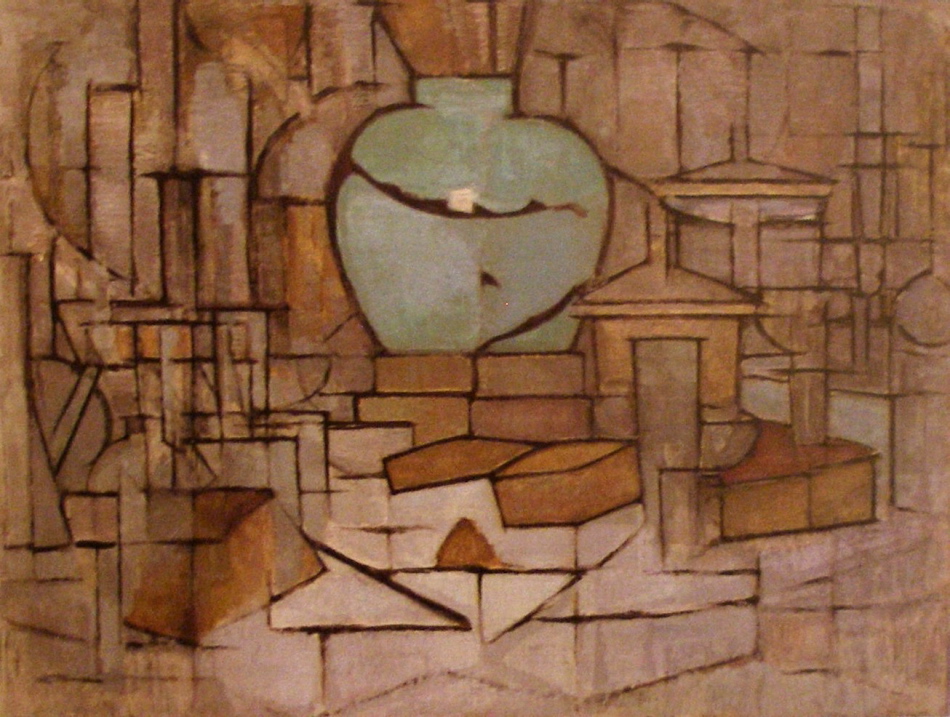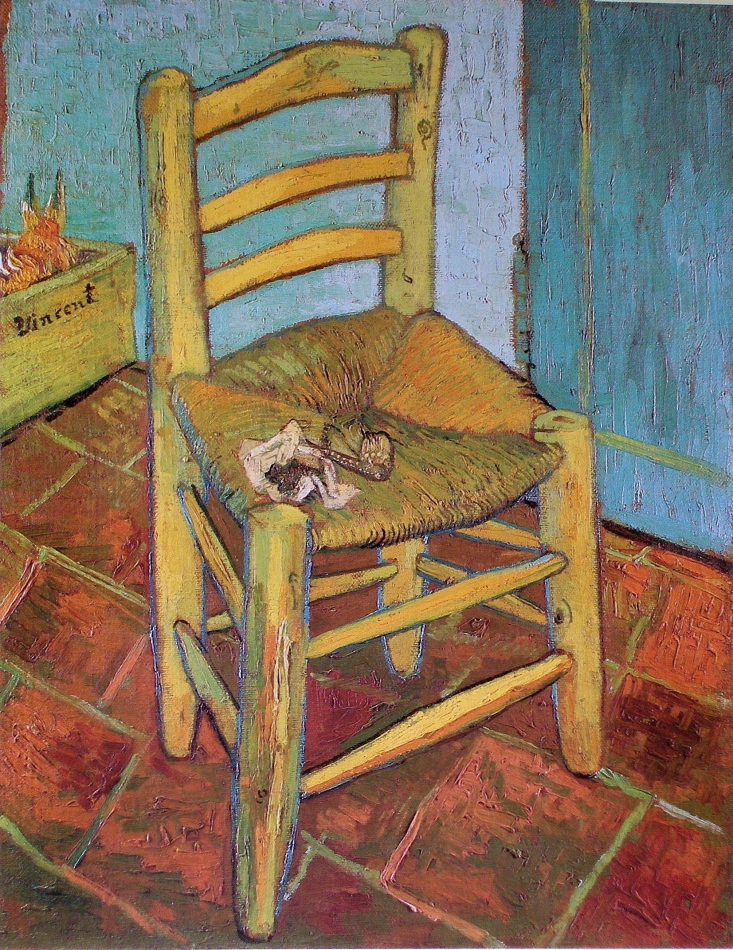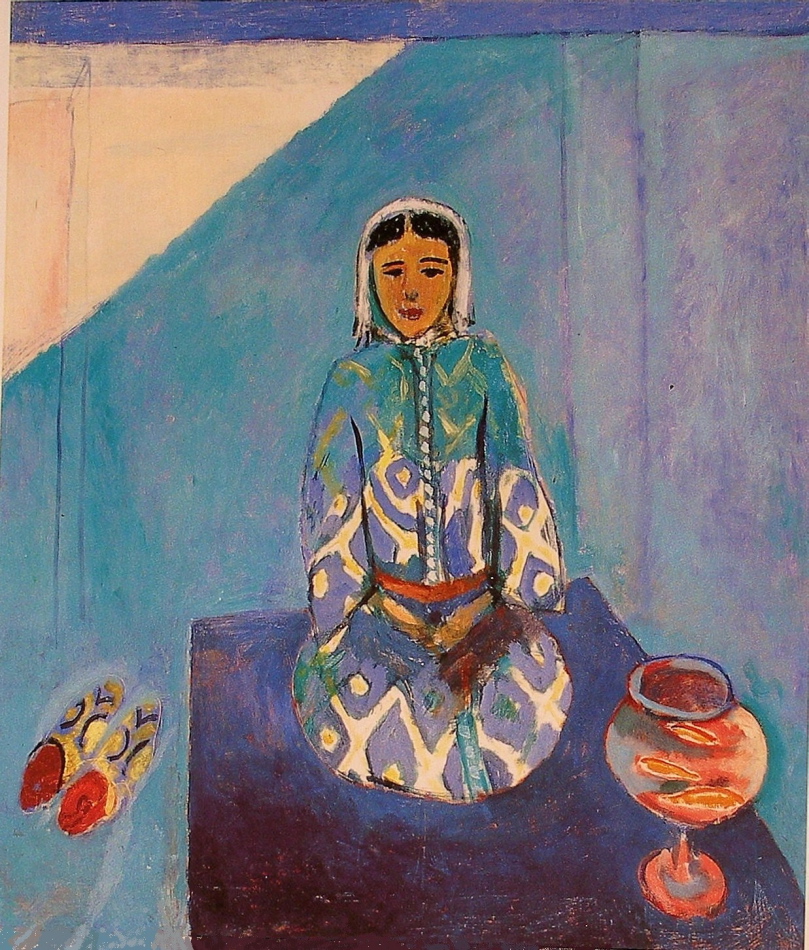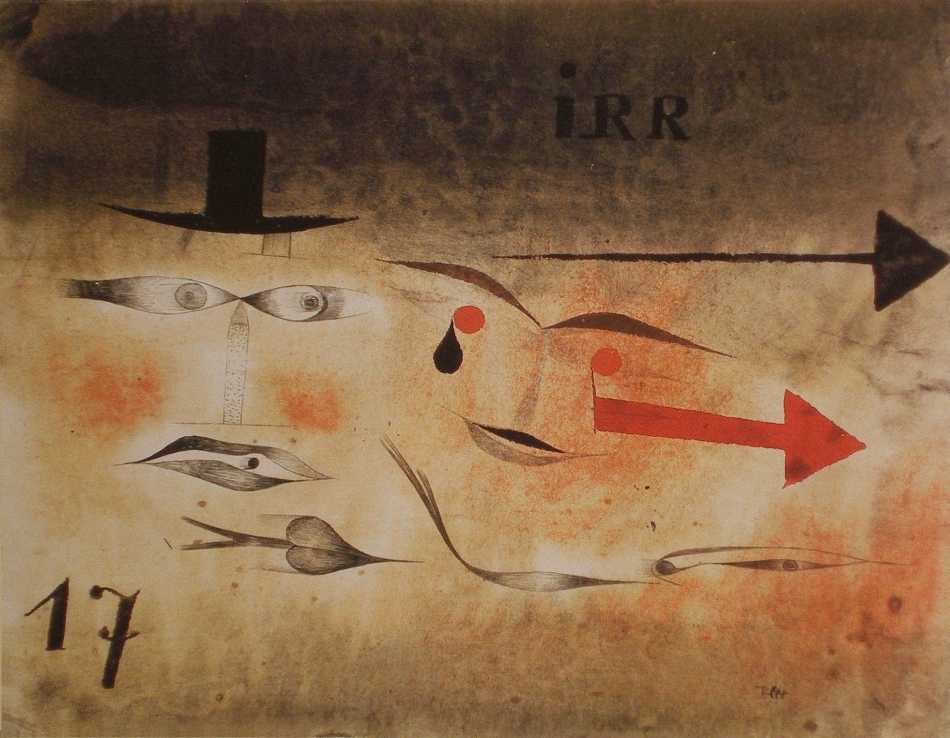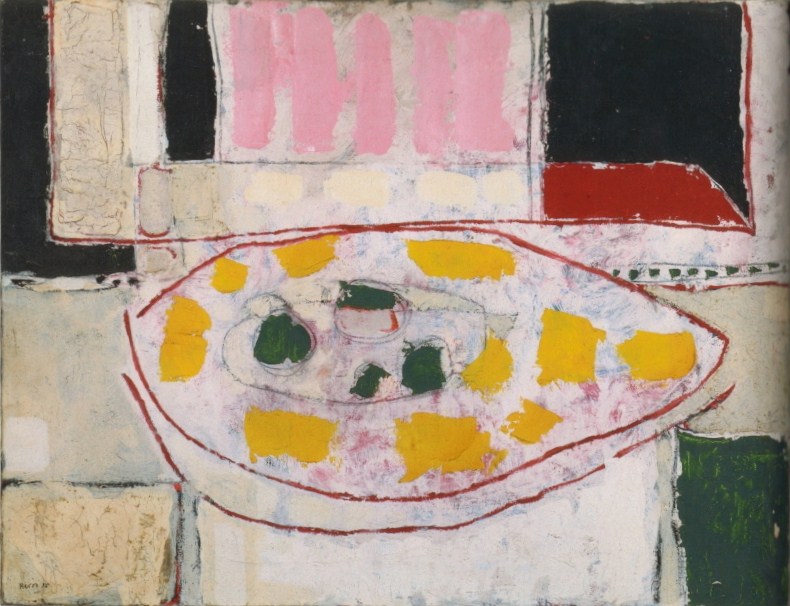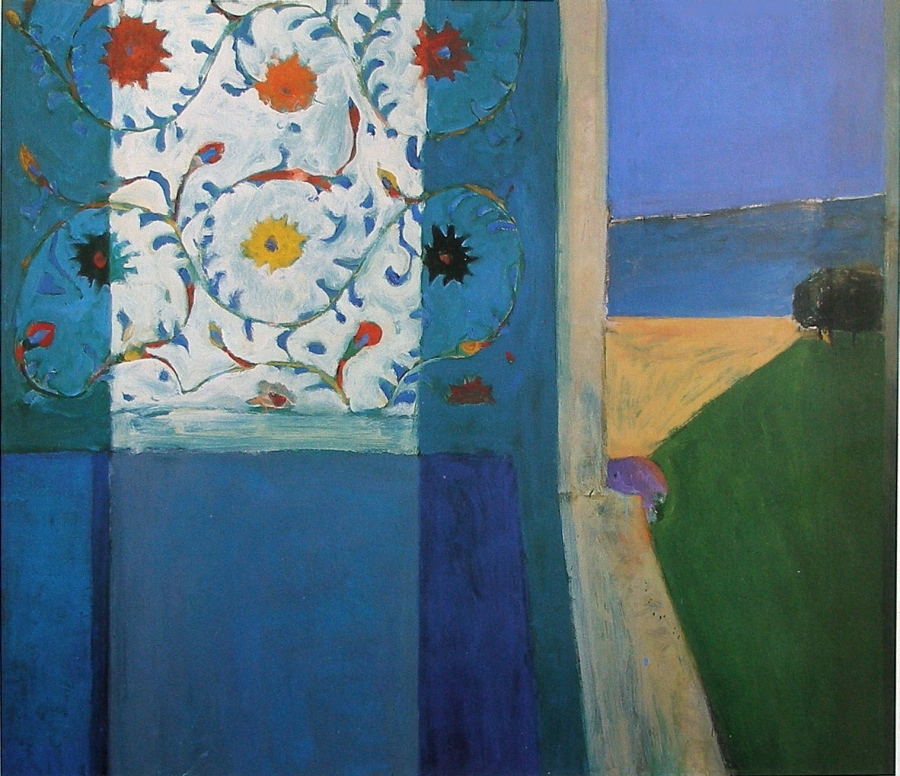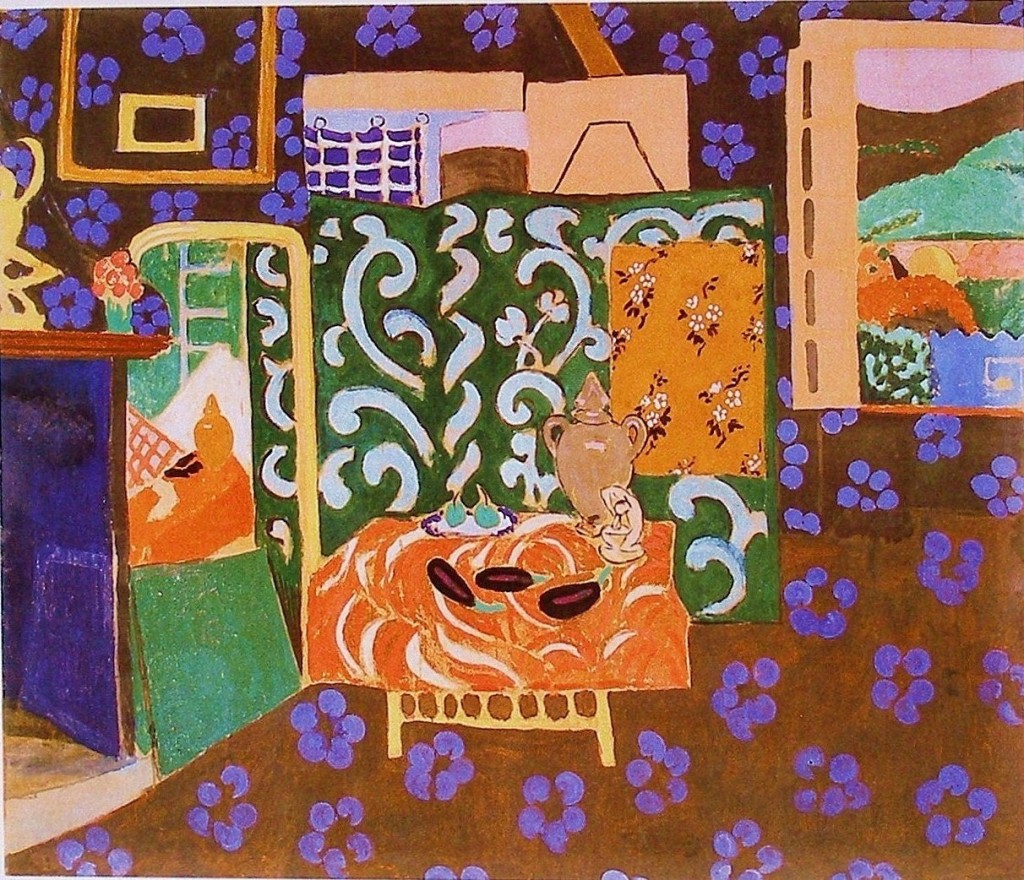Over time I have come to realise the importance of intent when considering abstraction. The reason being, while freely painting, numerous spontaneous avenues always arise. By initially determining the feeling I’m striving for I control endless temptations to stray, and carry on towards my initial idea.
This painting is an excellent example of committing to an intent. Right from the start I was after a delicate feel, and kept that in mind while working, avoiding all the other options the paint presented. While freely applying and agitating multiple layers of paint, interesting markings and shapes appear. I continue to remove and re-agitate them numerous times until the feeling I’m after comes forth. I’m in control because of my intent, and continue orchestrating towards what I’m striving for. It can be elusive and tenacity or patience is necessary.
I find It’s important not to hurry.
We all should play and explore. Eventually we make commitments and through them we find our language. This is why it takes so long to develop and it’s worth it!
Of course I also love following interesting options as they occur, and often do, the difference here, is deciding on what I’m after before beginning.

